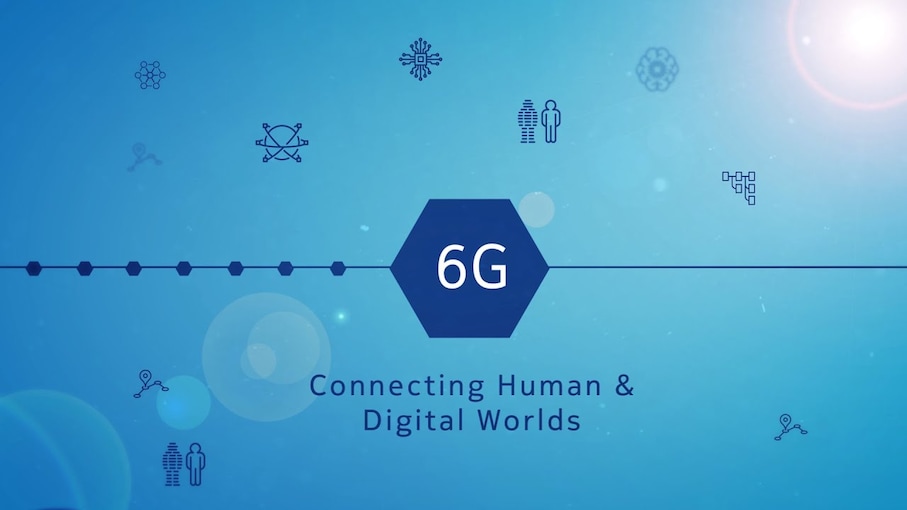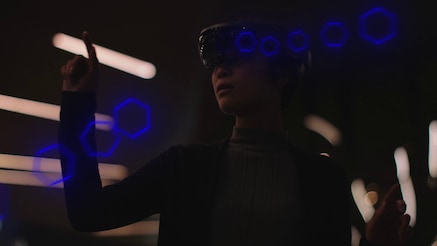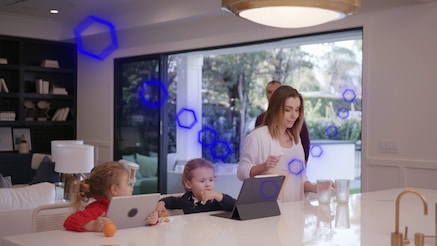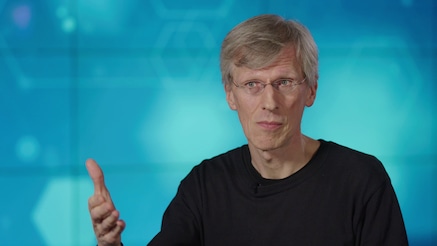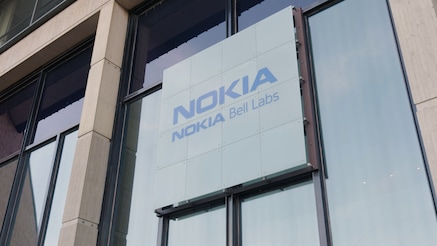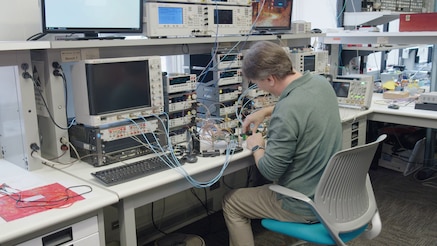Nokia’s vision for the 6G era

Imagine a world that fuses the digital, physical and human domains to create revolutionary immersive experiences. The coming together of machines, ambient data, intelligent knowledge systems and robust computation capabilities that redefine how we live, work and take care of our planet. This is exactly what we will experience with the arrival of 6G from 2030.
As 5G is rolled out commercially, enabling a rich fabric of cutting-edge technologies powering smart cities, factories, precision farming, the Internet of Things (IoT) and robotics, the rising demand and strain on the network will require a new, highly agile and cognitive architecture that automatically deploys new services optimally tailored to these applications, while further pushing the limits for the support of ultra-low latency, massive capacity and widespread connectivity. Not to mention better energy efficiency. 6G will meet these expectations and even go beyond by reformulating the very concept of network communications.
One striking aspect of that will be the blending of the physical and human world, thanks to the widespread proliferation of sensors and artificial intelligence/machine learning (AI/ML) combined with digital twin models and real-time synchronous updates. The digital twin models will be crucial since it would allow us to study the physical world and anticipate possible outcomes and initiate appropriate actions. Already in use with 5G, digital twin models in 6G will be deployed at a much broader scale and with much higher precision for a wide range of applications ranging from digital twins for industrials, cities, and humans.
Paving the way to 6G
Nokia Bell Labs expects 6G to launch commercially by 2030. Standardization phase 1 will likely start from 2025, leading to the first 6G specification in 3GPP Release 21 by 2028. It will be followed by commercial deployments around 2030. The springboard for 6G will be 5G-Advanced, the next standard enhancements for 5G. It will be a key focus for 3GPP in Release 18 and 19 onwards and will come laced with extended capabilities, improved efficiency and enhanced user experience.
5G-Advanced is expected to drive public and private networks starting in 2025 and will require a rethink of how networks are architected, designed and deployed. It will provide robust support for critical network applications, whether via communication service providers (CSPs) or as industry-grade private wireless networks.
Following in the footsteps of the previous generations, 6G will be characterized by a bouquet of unique technologies that will shape the future of communications. Adhering to the spirit of “six” for 6G, Nokia Bell Labs has identified the following potential innovations.
AI/ML: 5G and 5G-Advanced will tap into the real potential of AI/ML. It would span from the optimization of signal design and processing in the radio layer to scheduling at the cell site to network automation. In 6G, Nokia Bell Labs expects AI/ML will go from an enhancement to a foundation by taking a clean slate approach, allowing it to determine the most suitable interaction between two endpoints.
Spectrum bands: Spectrum is essential to providing radio connectivity. The new pioneer spectrum blocks for 6G are expected to be at mid-bands 7 – 20 GHz for urban outdoor cells, enabling higher capacity through extreme MIMO. The low bands 470 - 694 MHz will provide for maximum coverage, while sub-THz will boost peak data rates exceeding 100 Gbps in localized areas. 6G will further build on 5G-Advanced and take localization to the next level by leveraging on wide spectrum and new spectral ranges all the way up to terahertz.

Network sensing: A very exciting innovation that 6G will bring to the table would be its ability to sense the environment. The ubiquitous network becomes a source of situational awareness, collating signals that are bouncing off objects and determining type and shape, relative location, velocity and perhaps even material properties. With adequate 6G solutions for privacy and trust, such a mode of sensing can help create a “mirror” or digital twin of the physical world in combination with other sensing modalities.
Extreme connectivity: 6G will further refine the Ultra-Reliable Low-Latency Communication (URLLC) service that began with 5G to help address extreme connectivity requirements in highly specialized subnetworks at the end-points of the wide area networks. Network reliability could be amplified through simultaneous transmission and multiple wireless hops.
Cognitive, automated & specialized architectures: Replacing wired connectivity, 5G will operate in the enterprise/industrial environment. As the demand on the network rises, there will be the need for more flexible and increasingly specialised architectures. 6G with its new network and service orchestration solutions, combined with fully cloud-native principles and the advances made in AI/ML across all network functions will result in an unprecedented network automation and agility that will bring the most optimal service at the lowest possible operating costs.
Security and trust: The threat of sophisticated cyber-attacks looms large on networks. With the inflating possible attack surface of devices, software, AI, and network components, the menace it poses is potent and dynamic. 6G networks will be designed to provide trusted services on a zero-trust infrastructure and protect against such larger scale traditional threats as well as new threats like jamming of mission critical private networks. Privacy issues will also need to be taken into cognizance when new mixed-reality worlds combining digital representations of real and virtual objects are created.
Nokia a pioneer in 6G
Thanks to world-renowned research from Nokia Bell Labs, Nokia has taken the lead in defining the fundamental technologies for the 5G era and beyond. To make 6G a reality in the industry before 2030, Nokia is leading Hexa-X, the European Commission’s 6G flagship initiative for research into the next generation of wireless networks.
Apart from being part of numerous 6G research initiatives, Nokia is also a founding member of the Next G Alliance, a drive to advance North American mobile technology leadership, and RINGS, an NSF-led initiative in the US that will accelerate academic research jointly with industry in areas with potentially significant impact on Next-Generation (NextG) networking and computing systems.
Read more
- What is 6G
- Building a network with a sixth sense
- The 6G era’s enormous capacity demands will require new spectrum and extreme massive MIMO
- Trust thy 6G network: the future of communications hinges on security and privacy
- In future networks, 6G radios will learn from one another
- 5G-Advanced: Expanding 5G for the connected world
- Network evolution towards the 6G era
Resources for the media
Download rights free videos for editorial purposes
About Nokia
We create technology that helps the world act together.
As a trusted partner for critical networks, we are committed to innovation and technology leadership across mobile, fixed and cloud networks. We create value with intellectual property and long-term research, led by the award-winning Nokia Bell Labs.
Adhering to the highest standards of integrity and security, we help build the capabilities needed for a more productive, sustainable and inclusive world.
Media Inquiries:
Nokia
Communications
Phone: +358 10 448 4900
Email: press.services@nokia.com
